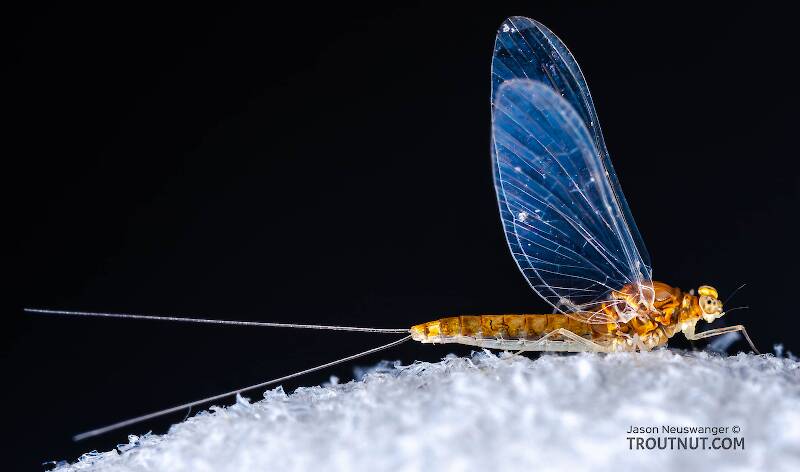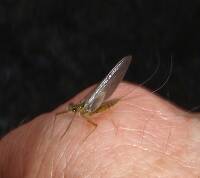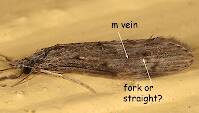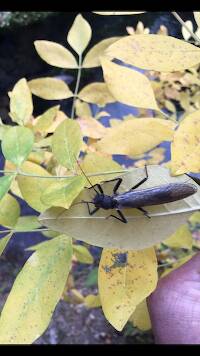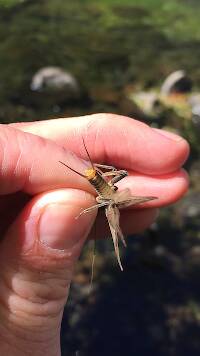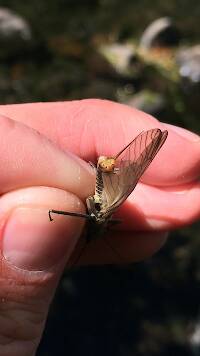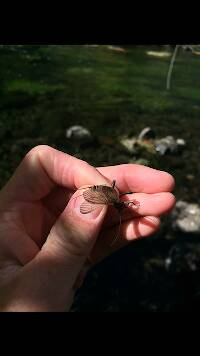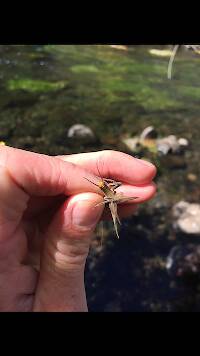
Hex Mayflies
Hexagenia limbata
The famous nocturnal Hex hatch of the Midwest (and a few other lucky locations) stirs to the surface mythically large brown trout that only touch streamers for the rest of the year.
Featured on the forum

I was not fishing, but happened to be at an unrelated social event on a hill above this tiny creek (which I never even saw) when this stonefly flew by me. I assume it came from there. Some key characteristics are tricky to follow, but process of elimination ultimately led me to Sweltsa borealis. It is reassuringly similar to this specimen posted by Bob Newell years ago. It is also so strikingly similar to this nymph from the same river system that I'm comfortable identifying that nymph from this adult. I was especially pleased with the closeup photo of four mites parasitizing this one.

Troutnut is a project started in 2003 by salmonid ecologist Jason "Troutnut" Neuswanger to help anglers and
fly tyers unabashedly embrace the entomological side of the sport. Learn more about Troutnut or
support the project for an enhanced experience here.
Taxon on Aug 11, 2006August 11th, 2006, 7:58 pm EDT
Jason-
The single detached intercalaries in the fore wing would limit the choices to the genera you suggest. The sharply pointed costal projection and single longitudinal vein in the hind wing probably narrow it to a single species. Unfortunately, none of the Baetidae hind wing illustrations to which I have access show either that sharply pointed of a projection or the single longitudinal vein, let alone in combination with one another.
The single detached intercalaries in the fore wing would limit the choices to the genera you suggest. The sharply pointed costal projection and single longitudinal vein in the hind wing probably narrow it to a single species. Unfortunately, none of the Baetidae hind wing illustrations to which I have access show either that sharply pointed of a projection or the single longitudinal vein, let alone in combination with one another.
Quick Reply
Related Discussions
Topic
Replies
Last Reply
3
Oct 4, 2006
by GONZO
by GONZO
12
Nov 12, 2020
by Millcreek
by Millcreek


